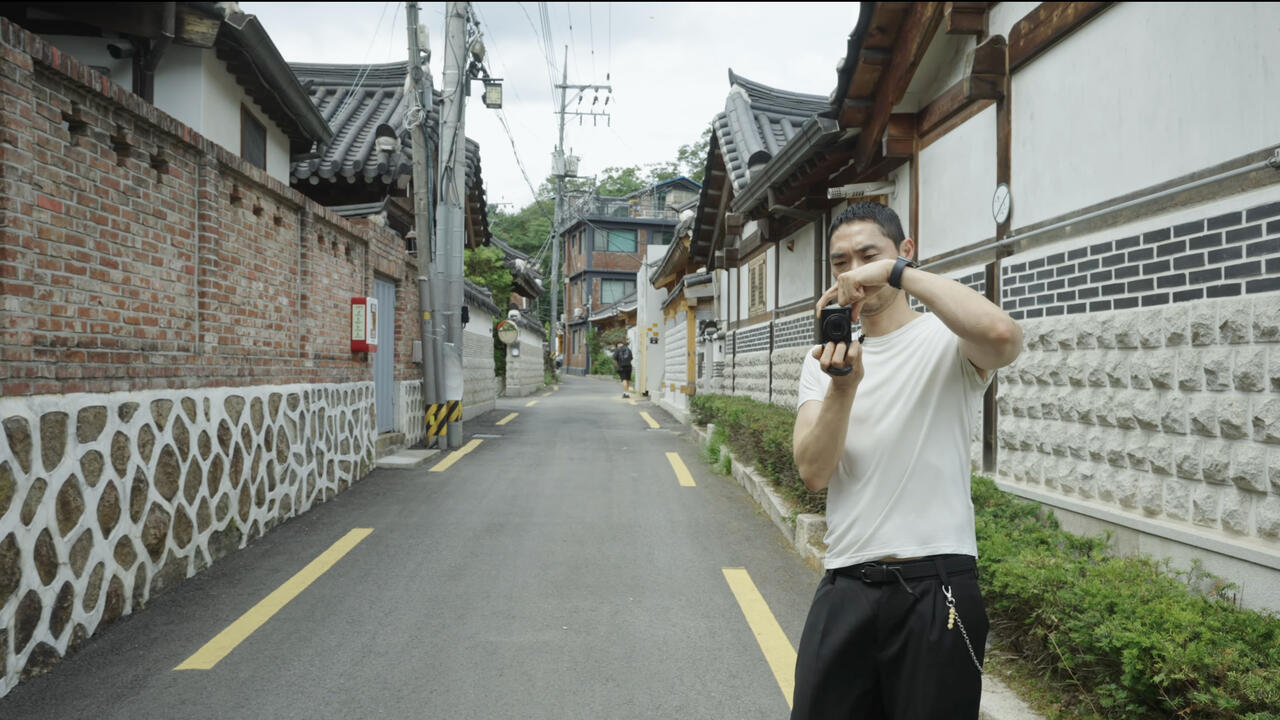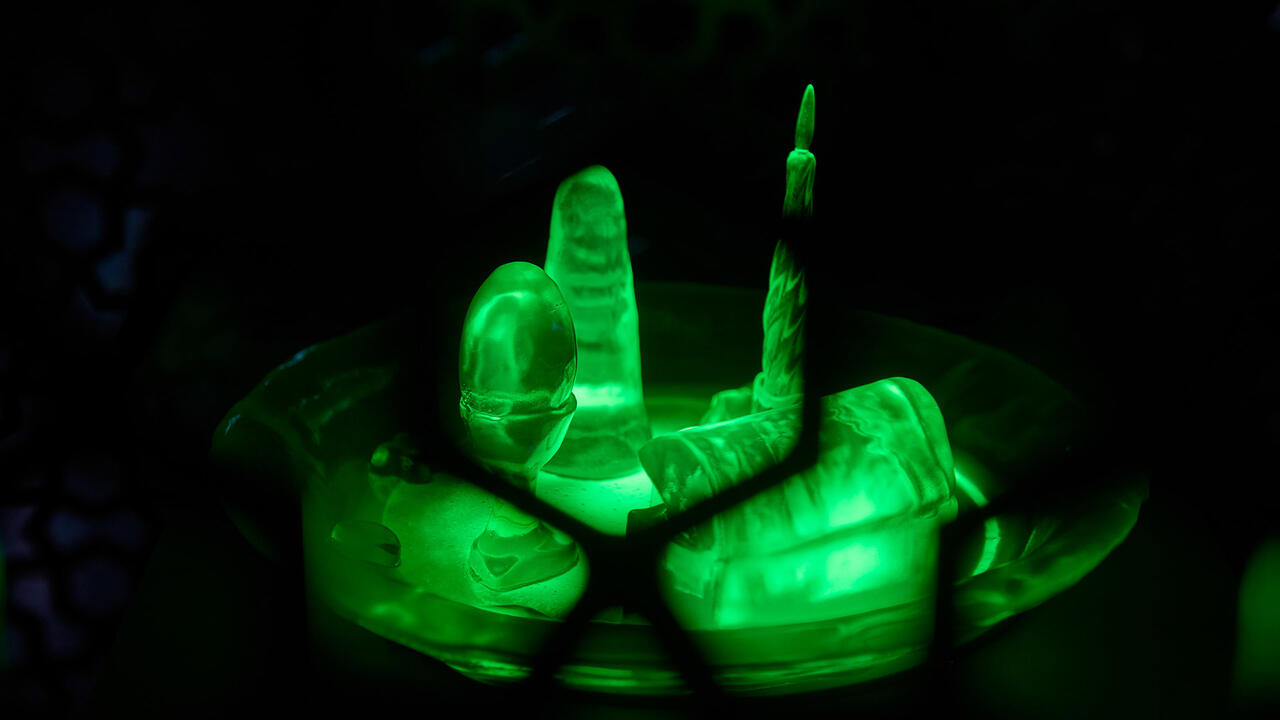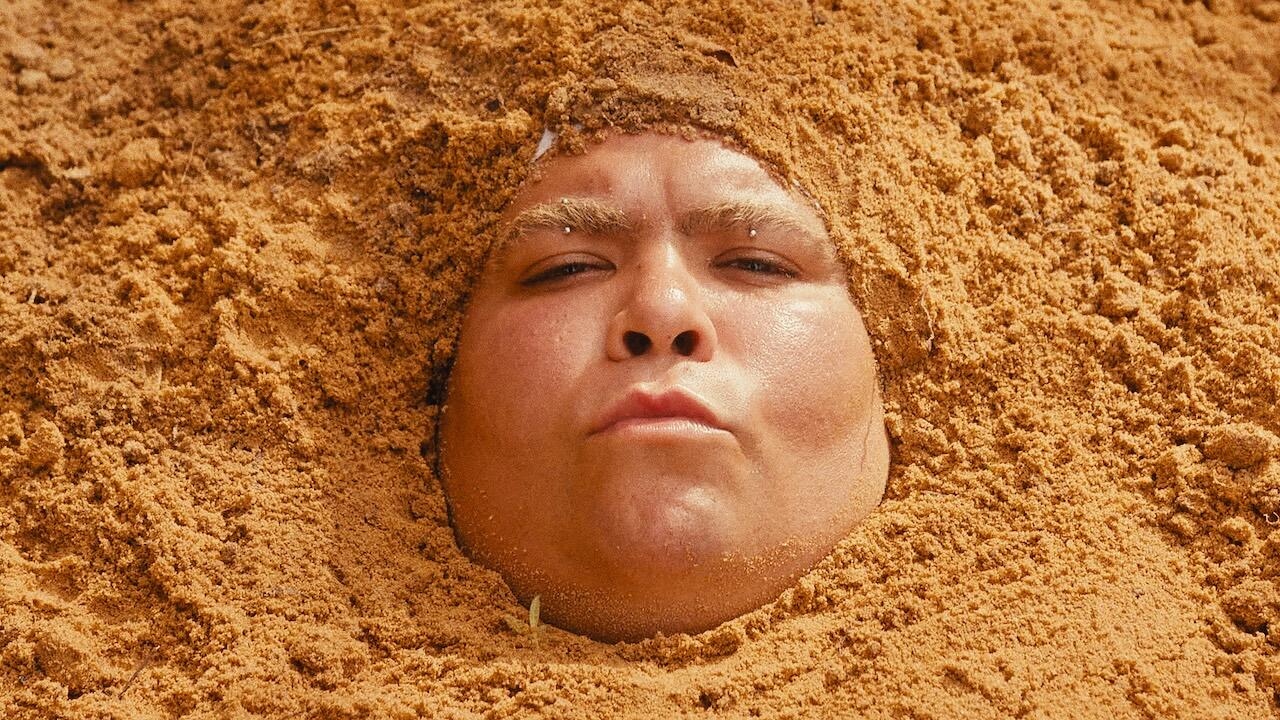Time & Again
Following a major commission from the Louvre, Taiwanese director Tsai Ming-liang talks about how music, his father and the responsibilities of filmmaking have informed his 20-year career
Following a major commission from the Louvre, Taiwanese director Tsai Ming-liang talks about how music, his father and the responsibilities of filmmaking have informed his 20-year career

For his 2009 film Visage (Face) Malaysian-born director and French cinephile Tsai Ming-liang – one of the most celebrated ‘Second New Wave’ directors of Taiwanese cinema – created a François Truffaut-inspired meta-film, set mainly within the walls of the Louvre in Paris. Acting as a guide through the immense building is perennial Tsai muse Hsiao-kang (played by Lee Kang-sheng), who, camera in hand, records the movie-within-a-movie – a strange re-telling of the Richard Strauss opera Salome (1905) which in turn is based on Oscar Wilde’s play of 1891. Among the more fantastical images in Visage are a snow flurry in the Tuileries Garden, a bloody abattoir in the Louvre’s basement and Laetitia Casta, singing and dancing in Christian Lacroix gowns. The most ambitious of Tsai’s films, Visage is a summation of the director’s principal themes of urban isolation, sexual frustration and cinematic iconography in the post-colonial world.
Having produced an oeuvre dedicated as much to interior design and architecture as to narrative and frame, Tsai’s unique filmmaking has garnered both cinematic and curatorial acclaim, a phenomenon which climaxed in a week-long film retrospective at New York’s Asia Society in 2009. Although Visage has yet to secure distribution rights outside of the festival and gallery circuits, Tsai continues to write, direct and run his coffee shop in Taipei.
Erik Morse: In Visage you focus on the ageing faces of your collaborator Lee Kang-sheng (who plays Hsiao-kang) and the actor made famous by Francois Truffaut, Jean-Pierre Léaud, to great effect. What was it about Lee Kang-sheng’s face that initially drew you to him?
Tsai Ming-liang: Hsiao-kang has a special familiarity to me. [In many instances during the course of this interview, Tsai refers to the actor Lee Kang-sheng by the name of the character in many of Tsai’s films, Hsiao-kang. Tsai prefers this to go unexplained.] He reminds me very much of my father, who passed away while I was shooting Rebels of the Neon God [1993]. My relationship with my father was distant; we had a typical relationship for my generation. He was an authority figure who rarely, if ever, expressed his emotions and feelings. As a result, we didn’t really understand each other although when he passed away I felt a profound sense of loss. Hsiao-kang and my father smoke in an incredibly similar way and both are very reticent. For one of my film installations, It’s a Dream [2007], I had Hsiao-kang wear my father’s clothes; it gave me an opportunity to observe someone with my father’s likeness. Realizing It’s a Dream took a long time – almost 20 years – during which I experienced a lot of pressure concerning my filmmaking. For example, people wanted me to change my lead male actor. This made me ask myself: ‘What does it mean to be an author?’ What does authorship entail? Am I responsible for the art I make or the audience I cater to? Am I making a film for myself as an artist or for the market?’ My collaboration with Hsiao-kang is at the heart of this conflict. To consistently use a character who looks and acts like my father is my way of making sure that I’m making these films for myself, not the market. Simply put: I choose to face Hsiao-kang in order to face myself.
Throughout my career, the most important question for me as a filmmaker is ‘what is film for?’ Obviously, for me it’s about self-discovery; this requires a very personal subject, such as my father. Hsiao-kang’s resemblance to him has thus become the source of my inspiration and the focal point of my creative energy – he’s a story line I faithfully follow.
em Your fascination with the image of Léaud was evident as early as 2001’s What Time is it There? when he appeared in a cameo role. When did you first see him on the screen and how did this eventually lead to his casting in Visage?
tml When the Louvre commissioned me to make a film they asked me: ‘What would you like to shoot?’ Without thinking, I replied that I wanted to make a film about Jean-Pierre Léaud. The reason I felt so strongly about this had to do with how Hsiao-kang and I view movie-watching. For most people, watching movies and making movies are two separate realms of experience but for me, they are the same. When I first saw Léaud’s face in The 400 Blows (1959) I was 20 years old and it changed the way I saw films. His face had nothing to do with being a matinée idol; it was completely different from the faces I had adored in the past – the female singers and stars of my childhood. On screen, Léaud’s face has a magical affinity with the film stock; it’s almost as though it was chosen by it to become the film’s ward. So when the Louvre asked me what I wanted to shoot, I said Léaud but with Hsiao-kang’s face in mind as well. I decided to make a film with the word ‘face’ in its title and combine my experiences as a viewer and a filmmaker. In this film Léaud, along with Fanny Ardant and Jeanne Moreau, are very old – everyone appears with aged faces in the film.
em How does the vision of Lee Kang-sheng’s face compare to the vision you have of the face of Léaud?
tml There is something very unique about film: its reality is not the same as the reality of real life. However, you cannot say the reality in film is fictional or unreal – it is real but with a fictional apparatus. Interestingly, the recreation process can sometimes make a film’s reality immortal; as soon as an image or a face is captured on film, it will no longer age. I am looking for a face that is chosen by the film to live in its reality and for me Hsiao-kang and Jean-Pierre both possess that special quality. Their faces were chosen by directors who make films in order to create art. When Truffaut chose Léaud from more than 1,000 boys who auditioned, and when I met Hsiao-kang in an arcade on the streets of Taipei, we both recognized that this is the face for the film reality we want to recreate. Actually, I think I take this approach even further than Truffaut. Whereas he used Léaud to recreate major events in the first half of his life, I just want to thoughtfully observe Hsiao-kang’s face. Of course, most auteurs have a face that they want to fix their gaze on. It’s just that I feel with Hsiao-kang I am doing it more thoroughly than other directors.
em During the filming of Visage, you were given unprecedented access to parts of the Louvre that are usually denied to visitors. Were there any particular spaces that you wished you had been able to film but were unable to?
tml The Louvre was built in the late 12th century and has been expanded and renovated ever since. Tourists only see the exhibition galleries, administrators only see the office and storage spaces, and fire-fighters have access to the sewer and ventilation systems. I specifically requested access to all these spaces. Even though the Louvre houses many masterpieces that I love, only paintings by Leonardo da Vinci and the meeting room in the Napoleon III Apartments made it into the film. When the museum commissioned Visage, they made it very clear that it was not for promotional purposes. Personally, I am more interested in the architectural elements of the Louvre; film is also an architectural concept. I spent almost three years scouting the various hidden locations; at first, the gallery didn’t understand why I needed access to ventilation pipes, sewer systems, or ancient wells no longer in use. Luckily, I met a fireman who assisted me in exploring the various hidden spaces. One of these discoveries was an abandoned sewer channel beneath the plaza of the rear palace. It’s a perfect size; although manmade, its stone surface possesses a kind of beauty that can only come with age. There were other spaces that I loved but could not use as every shot had to be approved by safety inspectors. For example, there is a beautiful space in the roof that only birds have access to as the stairs are worn out. I thought it would be perfect for the Salome scenes but it didn’t pass the safety inspection. For the scene in the sewer, I was told that only seven people at a time were allowed in the water, which made the shoot impossible. I lost my temper over this and told the Louvre that we were filmmakers not schoolboys on a field trip to a museum. After this, the museum became a bit more accommodating.
em As a director who is fascinated with the space of the city and the effects of urbanization, how do you view the psychological effects of the cityscape of Taipei and Kuala Lumpur in relationship to Paris?
tml I think it’s mostly about what you are accustomed to when you live in these cities. In Taipei, I don’t like the East district because it’s too new. I prefer the Western district because it mixes the new and the old but even there I get a nostalgic sense of loss when I notice that the old things are slowly disappearing. I feel very free in the places that I am familiar with; I also feel free in Paris, which I first visited as an adult. When you travel you never really leave behind the way you interact with your home city. If you enjoy going to farmer’s markets at home, you’ll seek out farmer’s markets in whatever city you’re in. I don’t feel compelled to learn the language of cities I find myself in and I especially dislike the idea of tour guides yapping on about history. When I’m in Paris, I enjoy feeling like a deaf person because I don’t understand French; it gives me a sense of tranquility. What I want to capture is the reality of a person travelling alone. Travel is so often represented in an unreal, idealized way; you rarely see anyone being robbed or eating an egg.
em Do you have different way of visualizing Asian cities and European cities?
tml Of course; they’re very different. Europeans tend to preserve and respect the old mores; they see these things as assets. In Asia, it’s all about development. Ironically, modernization is a very Western concept and, in the name of development, many Asian cities increasingly look like one another. I just returned from Shanghai and I really hated it. I’ve never seen such an ugly city: it’s a modernized monstrosity. Before I went there, I debated whether I should go because I knew that it wouldn’t live up to the Shanghai of my imagination – the city of Zhang Ailing’s fiction, or 1940s film, or the atmosphere of old Shanghai pop songs. The best parts of many Asian cities are a mixture of the old and the new. However, I’m afraid that eventually the new will totally eradicate the old and Asian cities will become generic. For example, I was sitting with my friends in a Starbucks in Shanghai and the view around us was identical to one in Kuala Lumpur. In old Shanghai there were so many unique details; now every district is the same. Taipei is more interesting; there are still areas that seem to be suspended in time.
em In all your films a sense of alienation is a central motif. Is there a physical or geographical place that you feel you belong to?
tml No. I think that belonging has nothing to do with a physical space; rather, it’s to do with being with the people you love. I have a godson in Taipei who I love very much and I am also close to Hsiao-kang’s family too, so I feel like I belong there.
em Visage features a number of beautiful musical fantasies lip-synched by Laetitia Casta. Although you have traditionally eschewed musical soundtracks in your films since Rebels of the Neon God, musical sequences have popped up in The Hole (1998) and The Wayward Cloud (2005). Where does your interest in musicals originate?
tml From the old songs I listened to when I was young; as I’ve mentioned, every element in my films comes from my own life. I started listening to musicals when I was a kid – songs from the 1930s through to the ’70s. They’re perfect for expressing certain situations. Although musicals make me happy, there’s no need for me to provide people with happy musicals anymore since there are so many available. I think the worst media production of our time is music videos, especially Korean ones; they’re all the same – same music, same dancing. I use the heat and passions of pop songs to provide my characters with an emotional outlet; as a way of struggling against their problems. These scenes can be very confrontational; they’re not there to console the audience and they’re often cruel, isolated elements imbued with a sense of struggle. In fact, in my films musical sequences often function like a character.
em A number of people have told me that they have fallen asleep during your films. Given the very minimalist, atmospheric style of most of your work, particularly in Goodbye, Dragon Inn (2004) – which is set in a darkened movie theatre with almost zero dialogue – it could be that there is something quite comforting about your filmmaking style that lures viewers into a kind of hypnotic somnolence. Do you ever fall asleep while watching films?
tml Often! In fact, just before you called I was watching a Bollywood film but I fell asleep. I also fall asleep watching kung fu films. It’s not a reflection of their quality; it’s just a habit of mine. But my films are not made for a mass audience. I aspire to represent a certain aspect of reality that attracts a particular group of people. I don’t mind if my films make some people fall asleep but then I really don’t mind criticism either; I feel that it doesn’t have anything to do with me.
em Rebels of the Neon God remains the least known of your films although it is one of my favourites. It’s mainly set in the vast video arcades of Taipei in the early ’90s and reflects East Asia’s bourgeoning electronic culture. However, none of your subsequent films deal with technology or techno-culture; if anything they focus on ageing technologies like wristwatches, old movie theatres and traditional medicine. Was there a reason you chose not to engage in the technology debate particularly when it’s become such a big part of Chinese and Taiwanese culture of the last two decades?
tml I have no interest in exploring these technologies. I don’t wear a watch and Lee Kang-sheng gave me his old mobile phone because I was once in a cinema during an earthquake and realized that I would have no way to communicate with the outside world if I was trapped. A friend gave me an iPhone, but it was annoying; I kept accidentally dialling and didn’t know how to turn it off. I do feel that much technology in our lives is unnecessary. Every time I see Steve Jobs announcing a new invention, I’m puzzled when people applaud – what has he done? What has he given us? Don’t you know that he just wants your money? He’s described as influential, but what kind of influence does he have on me? All I can think of is that he contributes to global warming.
em What projects are you currently working on?
tml I’m still making movies, of course, but recently I’ve been working at my coffee shop in Taipei as well as some installation art.
em Do you consider Visage to be an installation as well as a film?
tml When the Louvre commissioned me to make Visage, their attitude was that they wanted to fund a work of art. In the 100 years or so of cinema, very few people have collected film as art. Most people still treat it as a consumer product or see it as some kind of magic trick. I have been making movies for 20 years and I know that what I must do as a filmmaker is not to serve my audience or my wallet but to create art. There are installation elements to Visage: it’s actually using film to do installation art. I believe that if film is shown in museums it might separate it from the market and return to its original purpose as art. Film has to be reasserted as an aesthetic medium. Artists don’t see film directors as fellow artists or respect them as such; by introducing film into museums, it will provide them with greater creative freedom and garner directors more deserved respect.
Translated by Vincent Cheng. Special thanks to La Frances Hui.
















